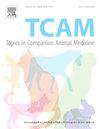Pet aftercare ordering models: Evolving to meet the needs of today’s pet owner
IF 1.3
3区 农林科学
Q2 VETERINARY SCIENCES
引用次数: 0
Abstract
Deceased pet aftercare is an important part of a pet owner’s experience and must be handled professionally with great attention to detail by veterinary teams and pet aftercare companies. To facilitate proper body handling, some pet aftercare companies have formed business relationships with veterinary hospitals/clinics, known as a Veterinary Aftercare Ordering Model (VAOM). An alternative model to the VAOM is the Client Aftercare Ordering Model (CAOM), whereby pet owners interact directly with an aftercare company. The goal of this study was to gain insights into veterinary professionals’ experiences and opinions regarding their aftercare model (VAOM or CAOM). An anonymous online survey was distributed through veterinary-related organizations, listservs, and social media sites from March 2024 through July 2024. A total of 772 participants completed the survey, with 21 % of participants reporting currently using a CAOM to support their client’s aftercare ordering needs. The factor reported as most important when using a CAOM was the ability to reduce potential mistakes (e.g., misspelling pet and owner names, contact information, and forgetting memorial item requests). Staff-related factors, including the impact on time needed to review aftercare options with clients, the need to be a liaison between the client and crematory, and the negative perception of appearing to upsell aftercare services, were all rated as more important by veterinary technicians compared to veterinarians. In conclusion, participants found that the use of CAOMs to be positively perceived by their clients and the majority indicated they plan to continue using the model.
宠物护理订购模式:不断发展以满足当今宠物主人的需求
已故宠物的善后护理是宠物主人经历的重要组成部分,必须由兽医团队和宠物善后护理公司以专业的方式处理,注重细节。为了方便妥善处理宠物尸体,一些宠物护理公司与兽医医院/诊所建立了业务关系,称为兽医护理订购模式(VAOM)。VAOM的另一种模型是客户售后服务订购模型(CAOM),宠物主人可以直接与售后服务公司进行交互。本研究的目的是了解兽医专业人员对其护理模式(VAOM或CAOM)的经验和意见。从2024年3月到2024年7月,通过兽医相关组织、listservs和社交媒体网站进行了一项匿名在线调查。共有772名参与者完成了调查,其中21%的参与者报告目前使用CAOM来支持其客户的善后订购需求。当使用CAOM时,最重要的因素是减少潜在错误的能力(例如,拼错宠物和主人的名字,联系信息,忘记纪念物品请求)。与兽医相比,兽医技术人员认为与员工相关的因素,包括与客户一起审查善后方案所需时间的影响,客户与火葬场之间的联络需求,以及似乎追加销售善后服务的负面看法,都更为重要。总之,参与者发现客户对CAOMs的使用有积极的看法,大多数人表示他们计划继续使用该模型。
本文章由计算机程序翻译,如有差异,请以英文原文为准。
求助全文
约1分钟内获得全文
求助全文
来源期刊

Topics in companion animal medicine
农林科学-兽医学
CiteScore
2.30
自引率
0.00%
发文量
60
审稿时长
88 days
期刊介绍:
Published quarterly, Topics in Companion Animal Medicine is a peer-reviewed veterinary scientific journal dedicated to providing practitioners with the most recent advances in companion animal medicine. The journal publishes high quality original clinical research focusing on important topics in companion animal medicine.
 求助内容:
求助内容: 应助结果提醒方式:
应助结果提醒方式:


